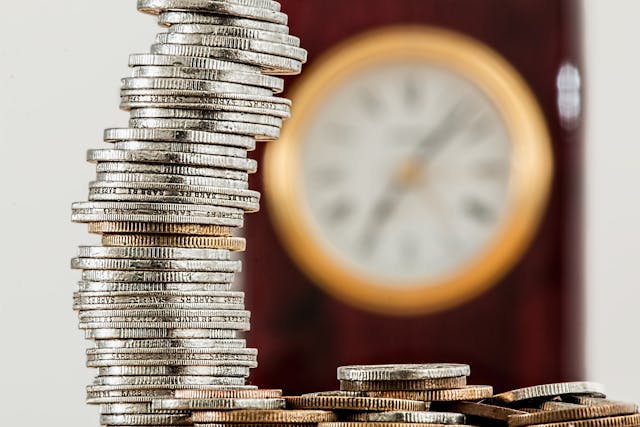

Strategies to Balance Debt Repayment and Savings Goals
That eternal tug-of-war between paying what you owe and stashing cash for tomorrow - let's talk about doing both without losing your sanity.
You know that feeling when you're trying to diet but someone puts a cheesecake in front of you? That's exactly what managing debt versus savings feels like. The credit card statements scream "PAY ME!" while your future self whispers "But what about retirement?" Here's the thing - you can do both. Not perfectly, but effectively enough to sleep at night.
The Art of Financial Juggling
First, let's kill a dangerous myth: the idea that you must eliminate all debt before saving a single penny. Nope. Wrong. Dangerous thinking. (Unless you're paying 25% interest on payday loans - then yes, focus there first).
The sweet spot? Allocate 60-70% of your available funds to debt and 30-40% to savings. Why? Because life happens. Like when your car's transmission dies the same week your dentist finds three cavities. Without savings, you're back to credit cards - and the vicious cycle continues.
Pro Tip: Always maintain at least $1,000 in emergency savings while paying down debt. It's your financial airbag.
Here's my three-tiered approach that's worked for hundreds of clients:
1. The Interest Rate Filter
List all debts by interest rate. Anything above 7%? Attack aggressively. Below that? Minimum payments while building savings. Why 7%? Historically, stock market returns average about 7% after inflation. So debt under that threshold is essentially "cheap money."
2. The 24-Hour Rule
Before making any extra debt payment over $500, wait 24 hours and ask: "Will I regret not having this cash accessible within the next 3 months?" If yes, split it - half to debt, half to savings.
3. The Automation Sandwich
Set up automatic transfers in this order: 1) 401k up to employer match (free money!), 2) minimum debt payments, 3) emergency fund contribution, 4) extra debt payments. This creates a "set it and mostly forget it" system.
"I used to put every spare dollar toward student loans until my cat needed $3,000 in emergency surgery. Now I balance both and sleep better." - Sarah K., 31
Case Studies: Real People, Real Balances
Case 1: The Credit Card Rollercoaster
Meet Jake, 28, with $22,000 in credit card debt (19% APR) and zero savings. He was throwing $1,200/month at debt but constantly borrowing back for emergencies. We:
- Reduced debt payments to $850/month
- Started saving $350/month
- After 6 months, his $2,100 emergency fund prevented four new charges
- Total time to debt freedom extended by 3 months, but he avoided $1,600 in new debt
Case 2: The Student Loan Standoff
Priya, 35, had $85,000 in student loans at 5.8% and wanted to save for a house. We:
- Kept making standard 10-year payments ($920/month)
- Automated $1,000/month into a high-yield savings account
- After 3 years: $36,000 saved for down payment + loan balance down to $62,000
- Bought a condo where her mortgage ($1,400) was less than rent ($1,650)
Case 3: The Retirement Catch-Up
At 47, Marcus had $9,000 in credit card debt but no retirement savings. Classic "too late to start" thinking. We:
- Paid minimums on debt ($300/month)
- Maxed out IRA contributions ($500/month)
- Used tax refunds for debt snowballs
- In 4 years: Debt-free with $28,000 in retirement funds growing at 7% annually
My Personal Money Meltdown
Let me confess something embarrassing. In 2015, I was a "financial expert" with $8,000 in credit card debt and just $200 in savings. I kept telling myself "I'll save after I pay this off." Then my laptop died. And my car needed new tires. Suddenly my debt was $9,500.
The turning point? I started putting just $50 per paycheck into savings while continuing $400 monthly debt payments. That $50 became my psychological safety net. Within a year, I had $1,300 saved and had reduced debt to $6,200. More importantly, I stopped adding new debt because I had that cushion.
Watch Out: If your debt payments exceed 40% of your take-home pay, you may need professional help. There's no shame in that - I've been there.
Your Turn: Let's Get Personal
Here's where I want you to grab a notebook (or open your Notes app) and answer these three questions:
- What's your current debt-to-savings ratio? (Example: $10k debt/$500 savings = 20:1)
- What's one expense from last month that could've been avoided with $1,000 in savings?
- If you redirected 20% of your current debt payments to savings, how long until you have a $1,000 cushion?
Don't overthink it - rough estimates are fine. The goal is awareness, not precision. I'll wait here while you jot those down...
Interactive Challenge: For the next 30 days, try the "Round-Up" method: Whenever you make a debt payment, transfer $1 to savings. Small? Yes. Powerful psychological trick? Absolutely.
The Psychology Behind the Balance
Here's why this balanced approach works where extreme methods fail: it accounts for human nature. We're not robots. When people go "all in" on debt repayment:
- 78% experience financial stress when unexpected expenses arise (2022 Financial Health Network study)
- 43% abandon their plans within 6 months
- The average person cycles through the same debt 2.7 times in their lifetime
By contrast, those who balance debt and savings:
- Are 2.3x more likely to stay on track for 2+ years
- Report lower money-related anxiety
- Build credit scores faster (savings = fewer missed payments)
Think of it like weight training - you wouldn't only work your biceps while ignoring your back. Financial fitness requires balanced development.
Advanced Tactics for the Ambitious
Once you've mastered the basics, try these power moves:
1. The Interest Rate Match
For every 1% your savings earn, add 1% to debt payments above the minimum. Example: Your HYSA pays 4%? Take 4% of your savings balance and make an extra debt payment that amount quarterly.
2. The Windfall Split
Tax refunds, bonuses, gifts? Use the 60/40 rule: 60% to debt, 40% to savings. This maintains momentum while preventing deprivation burnout.
3. The Debt-Savings See-Saw
Every 6 months, reevaluate interest rates. If savings rates rise significantly (like they did in 2022-2023), you might temporarily reduce debt payments to capitalize on higher yields.
"Using the Interest Rate Match method, I paid off $18,000 in student loans while growing my savings from $0 to $7,000 in 28 months." - David R., 29
Remember: Personal finance is exactly that - personal. These aren't rigid rules but flexible guidelines. Some months you'll pay more toward debt, others you'll prioritize savings. That's okay. The key is maintaining both efforts simultaneously rather than switching between extremes.
So tell me - which strategy resonates most with you? The psychological comfort of the 24-hour rule? The mathematical precision of the interest rate filter? Or maybe my embarrassing confession made you feel better about your own situation? Whatever your starting point, the important thing is starting. Today. Now. Even if it's just $5 toward savings while you keep paying down debt.
Because here's the ultimate truth nobody tells you: The perfect balance between debt and savings doesn't exist. But a good enough balance? That's absolutely within your reach.


